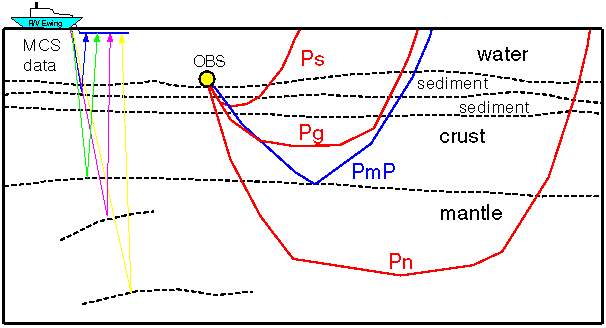
Funded by NSF Marine Geology and Geophysics Program, 1997 (Dale Sawyer PI).

Fig.1. Survey geometry of the Iberia seismic experiment. Circles and triangles show OBS and OBH locations and colored lines are airgun profiles. Only lines with OBS/OBH coverage are labeled; all lines have MCS coverage. Land stations that recorded the airgun shots are also indicated. Only data from lines 1, 4, 5 and 6 have been considered so far.

Fig. 2. Seismic phases used in obtaining the 2D velocity models for lines 1 and 5 using the traveltime inversion method of Zelt and Smith (1992). Ps, Pg, and Pn are wide-angle refracted arrivals though the sediments, crust and upper mantle. PmP is the wide-angle reflected arrival from the Moho. Reflections picked from the unmigrated MCS data (Fig. 7) were jointly inverted with the wide-angle data, including reflections from the sediments, the S reflector/mantle, and features in the crust and mantle that do not coincide with layer boundaries or velocity discontinuities in the model but were treated as "floating reflectors".